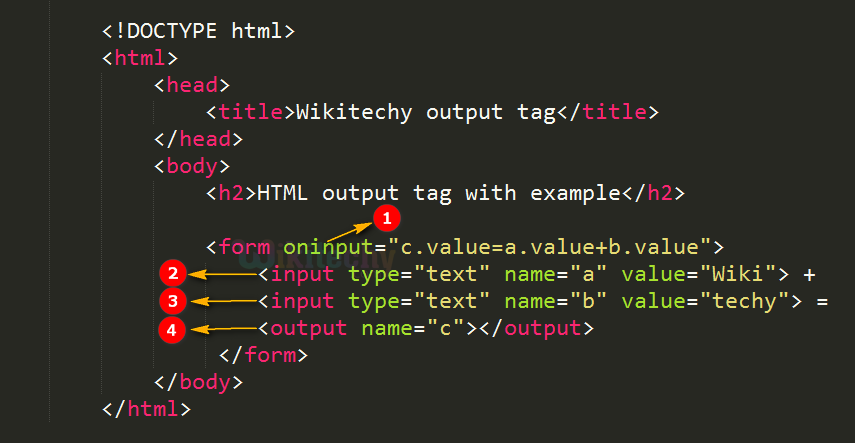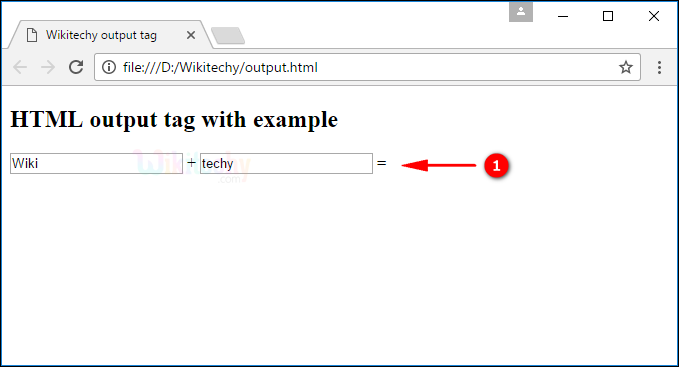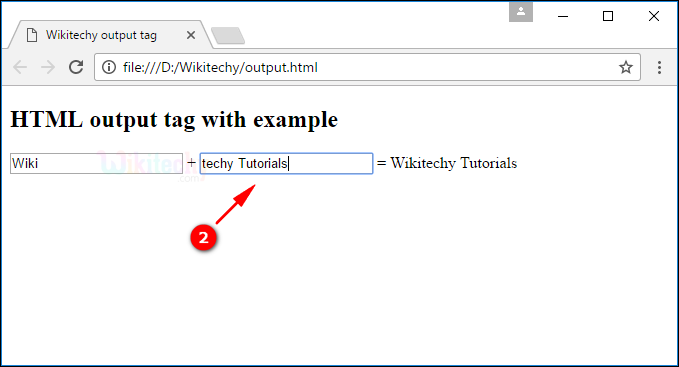Learn html - html tutorial - output tag in html - html examples - html programs
The <output> tag shows the result of a calculation.
The <output> tag belongs to flow content, phrasing content, form-associated element, listed, labelable, resettable and palpable content.
The <output> tag supports Global Attributes and Event Attributes.
Syntax for output tag:
<output name = “name”> content</output> Differences between HTML 4.01 and HTML5 for <output> tag:
HTML 4.01
HTML4 does not supports <output> tag.
HTML5
The <output> tag is new in HTML5.
Sample Coding for <output> tag:
<!DOCTYPE html>
<html >
<head>
<title> Wikitechy output tag</title>
</head>
<body>
<h2> HTML output tag with example</h2>
<form oninput="c.value=a.value+b.value">
<input type="text" name="a" value="Wiki"> +
<input type="text" name="b" value="techy"> =
<output name="c"></output>
</form>
</body>
</html> Code Explanation for <output> tag:
oninput event triggers when user gives any input if the event triggered the concatenated string of and b will be stored in c.The <input> tag textbox named as a and its value will be “Wiki”.
The <input> tag textbox named as b and its value will be “techy”.
The <output> tag named as c and that will be show the concatenated output of a and b.
Output of <output> tag:
When the user change the text in the text box that will be manipulated and displayed in the output.
Attribute:
Attribute
HTML 4.0.1
HTML 5
Description
form no
Yes
The <output> tag belongs to specify one or more forms.
name no
Yes
Defines a name for the <output>tag.
for no
Yes
Indicates the relation between the result of the calculation, and the elements used in the calculation.
Browser Support for <output> tag:
Related Searches to output tag in html
form html
html form example
html form drop down
html form templates
html form input types
html form post
html form design
form html5
html form generator
html tutorials html editor html code html form html tutorial html color html color codes html table html img html5 html code for website html and css html programs html website free html editor html5 tutorial wysiwyg html editor html tutorial pdf html converter php tutorial html example html tutorial css tutorial html css html tags html basics code html html online html mailto html lang html tags list




